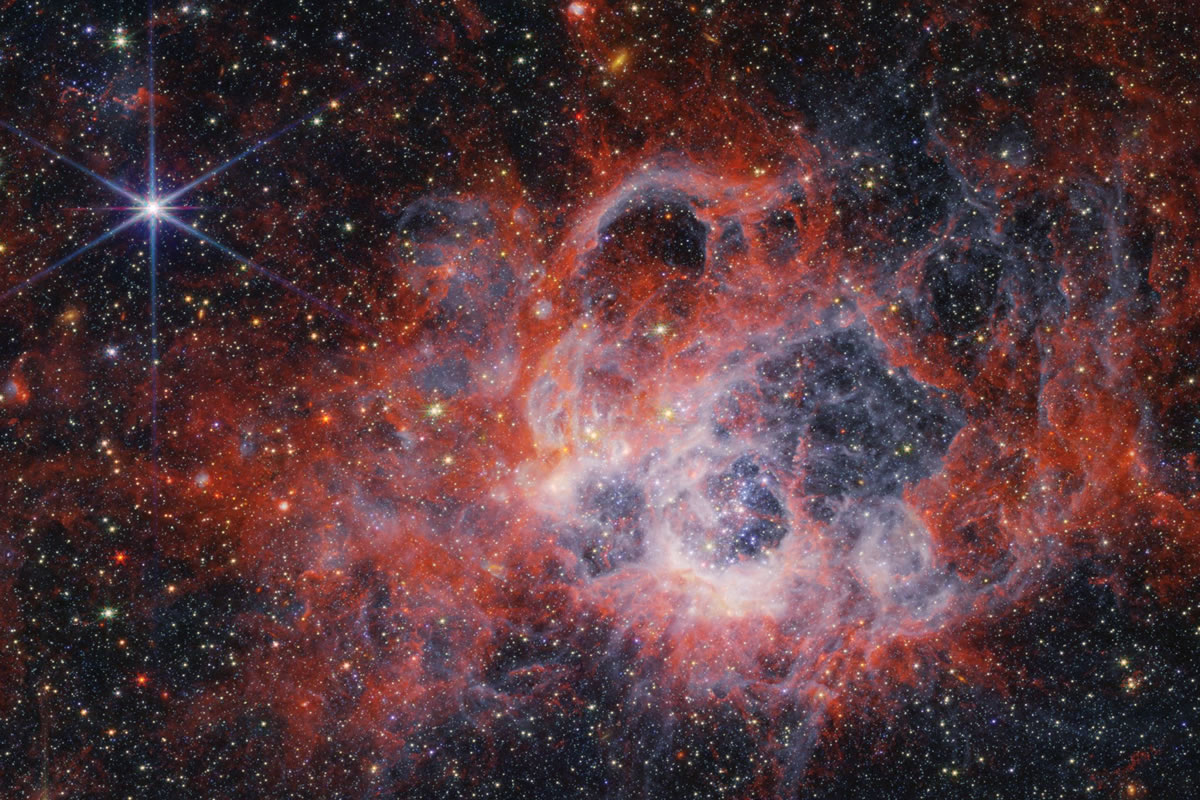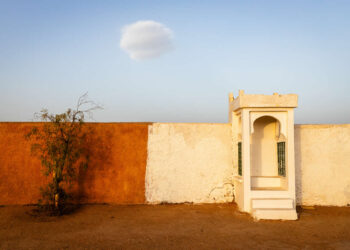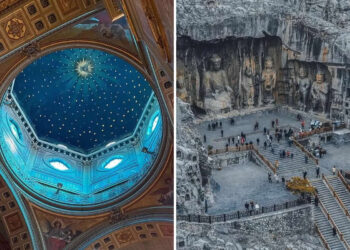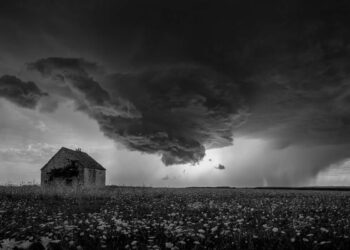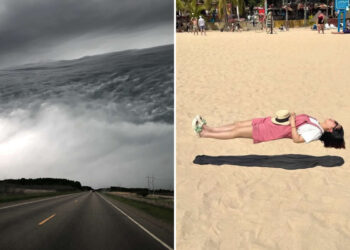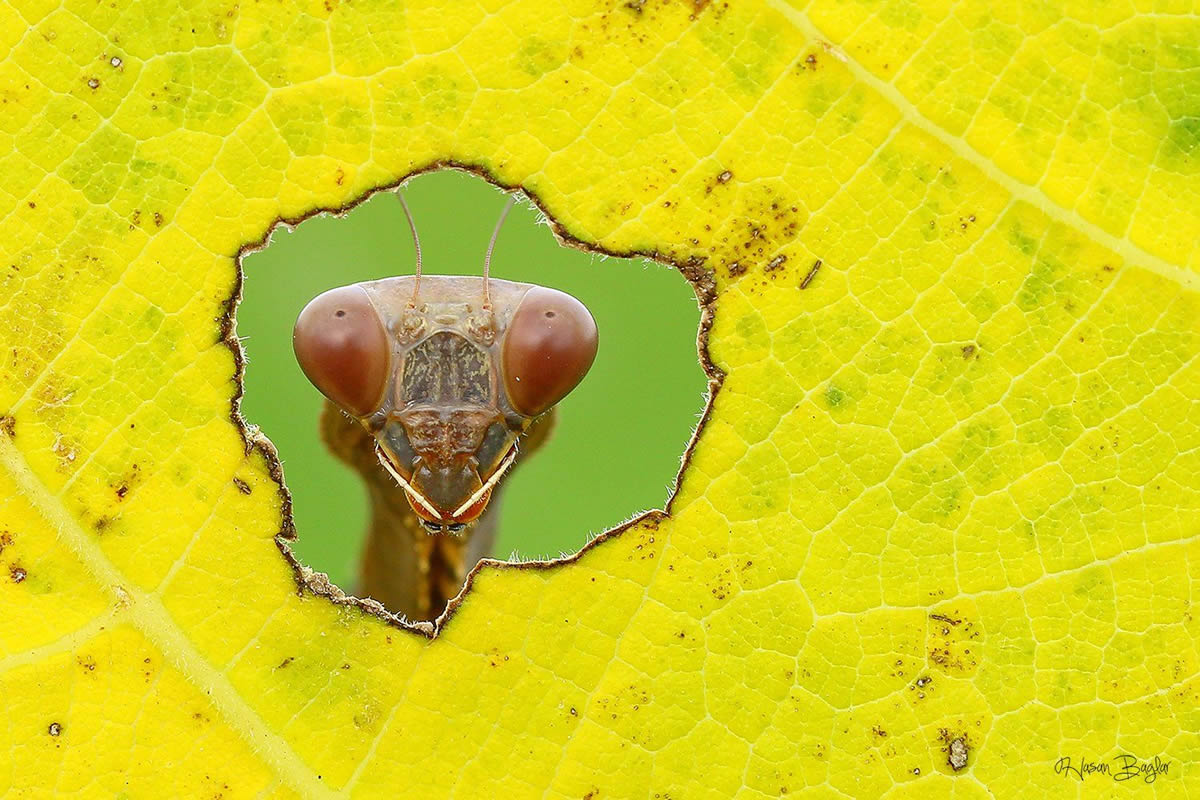The James Webb Space Telescope (JWST) has continued to captivate the world with its breathtaking imagery in 2024, pushing the boundaries of our understanding of the universe. This year’s collection of photos showcases the remarkable capabilities of the JWST, capturing stunning details of distant galaxies, nebulae, and star formations with unprecedented clarity.
Among the highlights are the vivid colors and intricate structures of the Carina Nebula, which offer a glimpse into the dynamic processes of star birth and evolution. Additionally, the JWST has provided mesmerizing views of exoplanet atmospheres, revealing their compositions and hinting at the potential for life beyond our solar system.
Scroll down and inspire yourself. Please check James Webb Spaces’s Flickr for more amazing work.
You can find James Webb Space on the web:
#1. Interacting Galaxies Arp 142
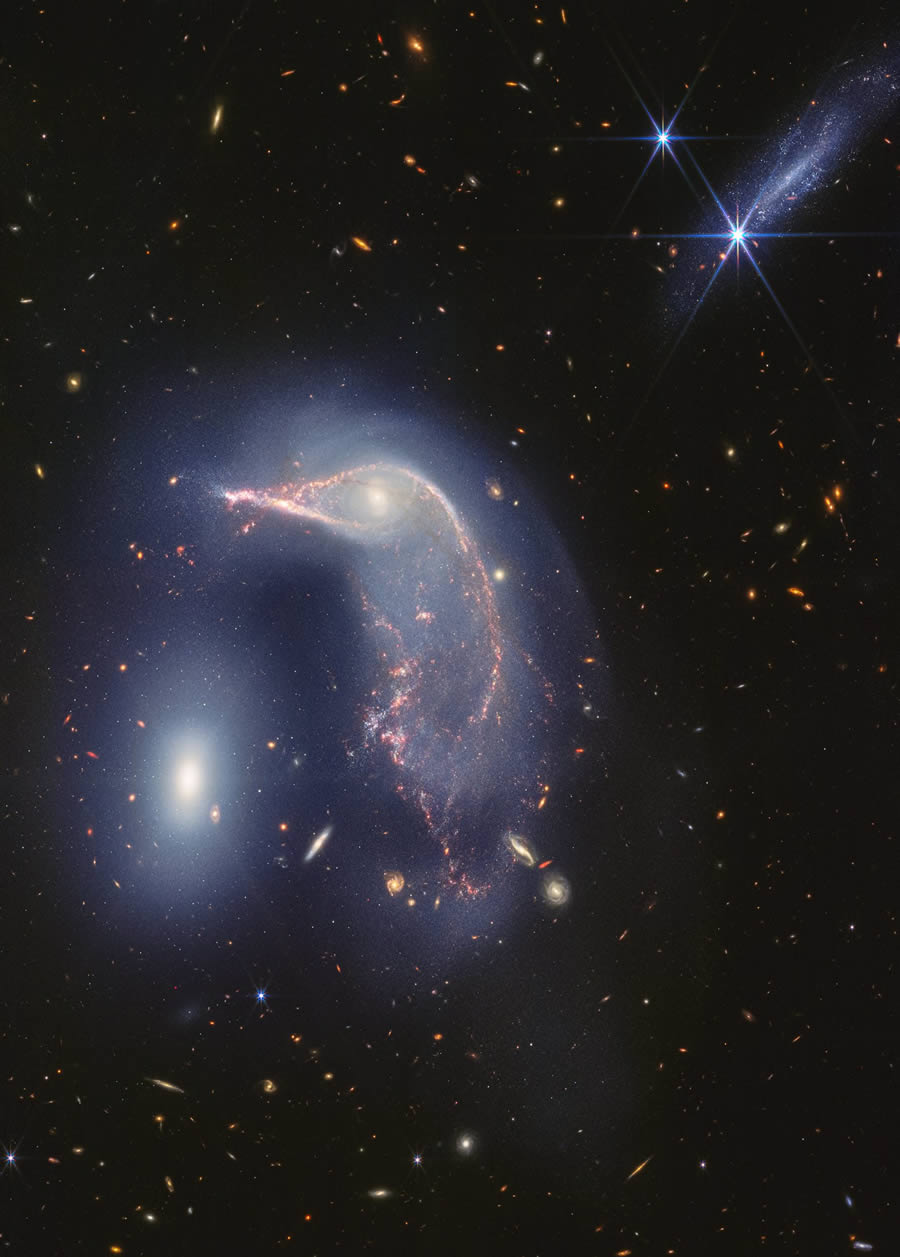
Image Source: NASA’s James Webb Space Telescope
This new Webb image shows two galaxies: a Penguin (NGC 2936) guarding an Egg (NGC 2937). Webb’s observations reveal the two are in a cosmic hug, joined together by a blue haze of stars and gas.
#2. MACS J0416 (Chandra/Hubble/Webb composite)
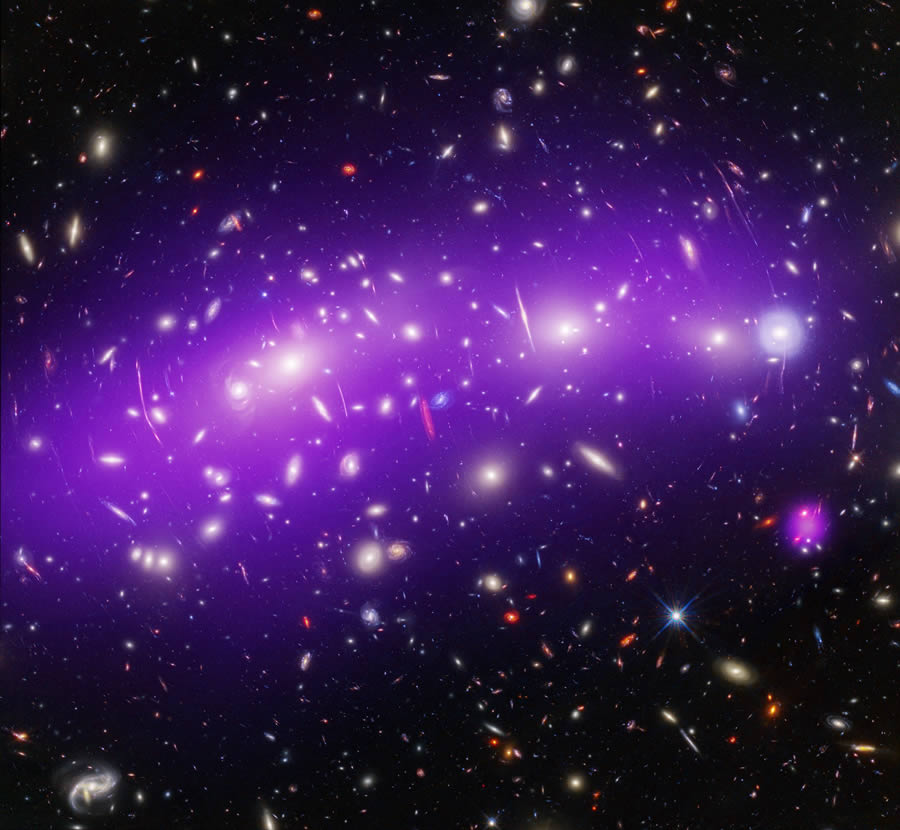
Image Source: NASA’s James Webb Space Telescope
This is a composite image from NASA’s Chandra X-ray Observatory, the Hubble Space Telescope, and the James Webb Space Telescope. Pictured is galaxy cluster MACS J0416 at a distance of about 4.3 billion light-years from Earth.
#3. NGC 3627 (Chandra/Webb/Hubble composite)
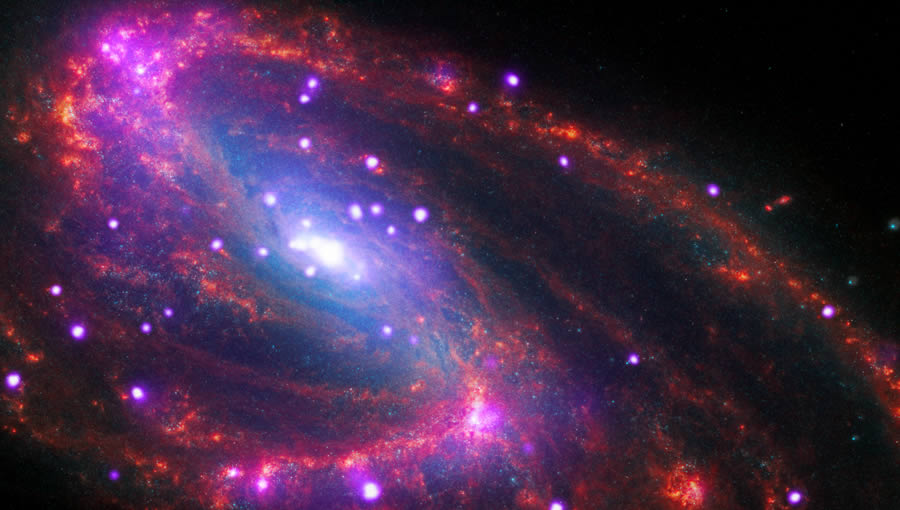
Image Source: NASA’s James Webb Space Telescope
This is a composite image from NASA’s Chandra X-ray Observatory, the Hubble Space Telescope, and the James Webb Space Telescope. Pictured is galaxy NGC 3627, located 36 million light-years away.
#4. Orion Nebula (Chandra/Webb composite)
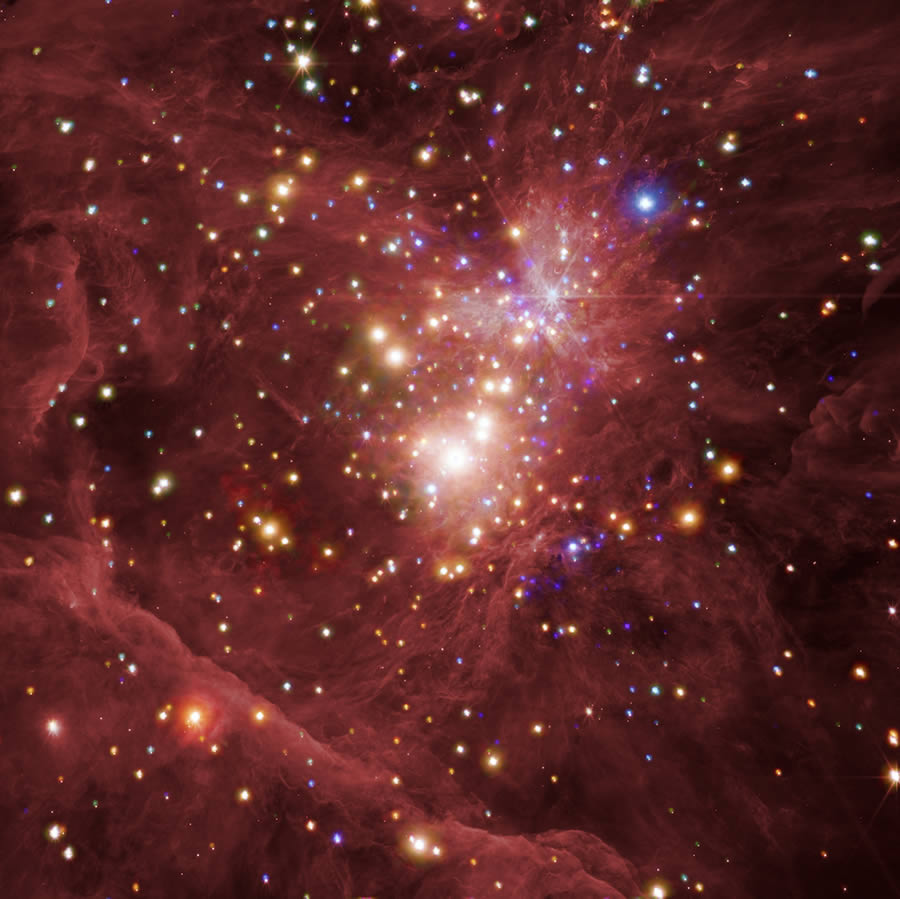
Image Source: NASA’s James Webb Space Telescope
This is a composite image from NASA’s Chandra X-ray Observatory and the James Webb Space Telescope. Pictured is the Orion Nebula, a giant cloud where stars are forming. Still located in the Milky Way galaxy, this region is a little bit farther from our home planet at about 1,500 light-years away.
#5. Rho Ophiuchi Composite (Chandra/Webb
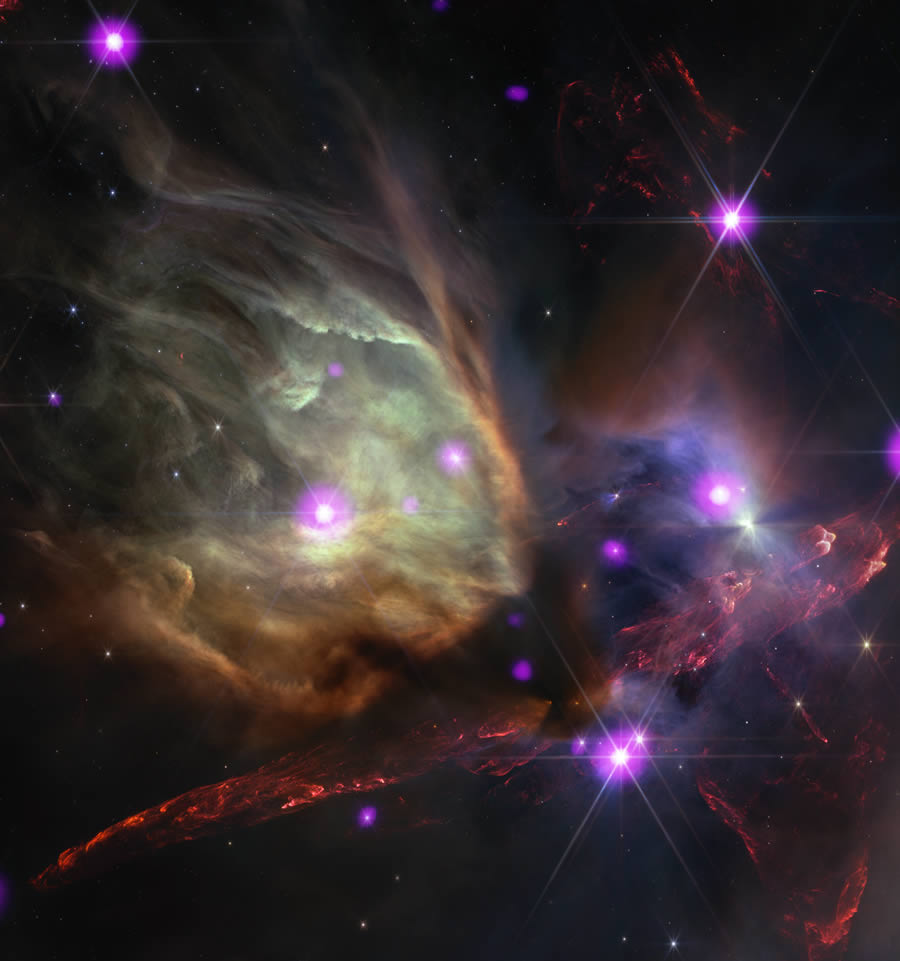
Image Source: NASA’s James Webb Space Telescope
This is a composite image from NASA’s Chandra X-ray Observatory and the James Webb Space Telescope. Pictured is Rho Ophiuchi, at a distance of about 390 light-years from Earth. Rho Ophiuchi is a cloud complex filled with gas and stars of different sizes and ages.
#6. NASA’s Webb Captures Celestial Fireworks Around Forming Star
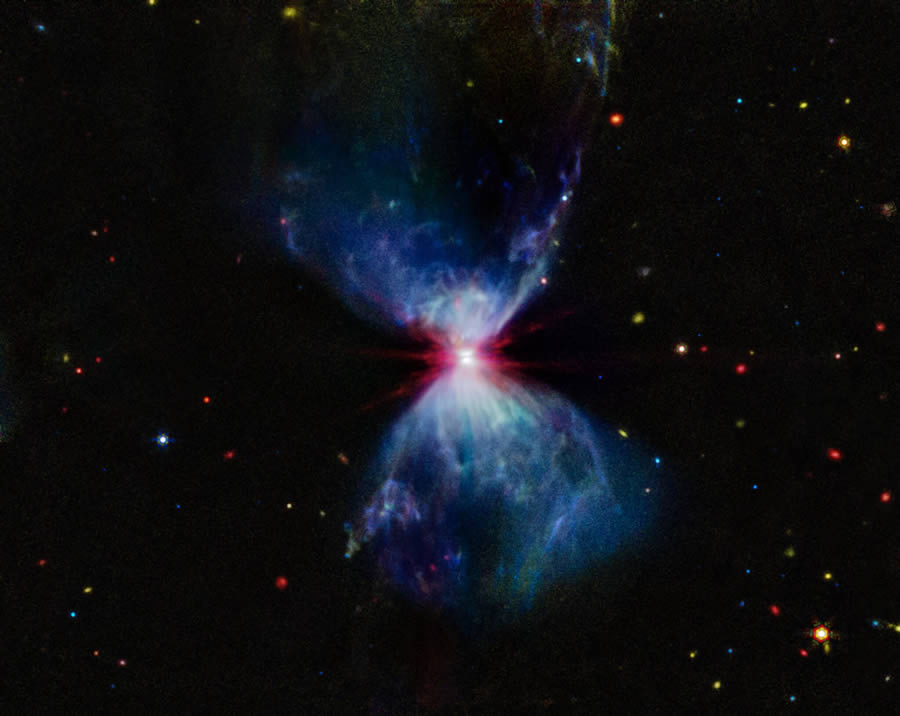
Image Source: NASA’s James Webb Space Telescope
Webb’s new red, white and blue image features a star-to-be: a protostar. Only about 100,000 years old, this relatively young object is hidden in the “neck” of the hourglass-shaped cloud of gas and dust.
#7. Jupiter’s atmosphere around the Great Red Spot (NIRCam and NIRSpec)
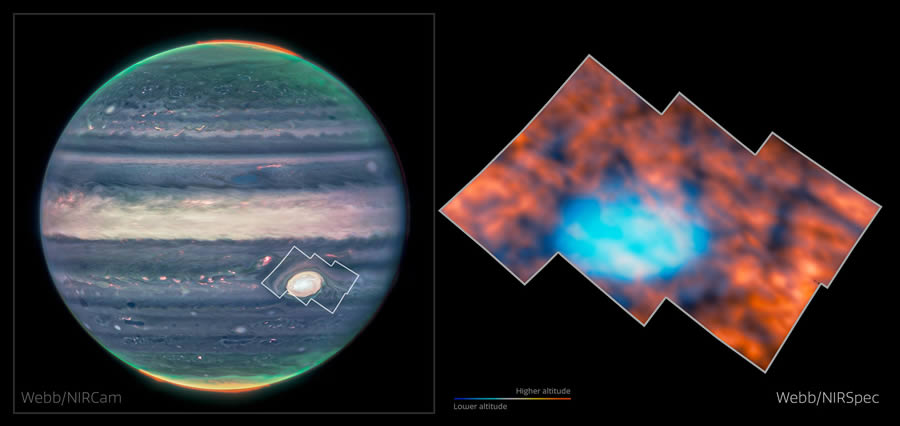
Image Source: NASA’s James Webb Space Telescope
New observations of the Great Red Spot on Jupiter have revealed that the planet’s atmosphere above and around the infamous storm is surprisingly interesting and active. This graphic shows the region observed by Webb — first its location on a NIRCam image of the whole planet (left), and the region itself (right), imaged by Webb’s Near-InfraRed Spectrograph (NIRSpec).
#8. Galaxy cluster SPT-CL J0615−5746 (wide-field view)
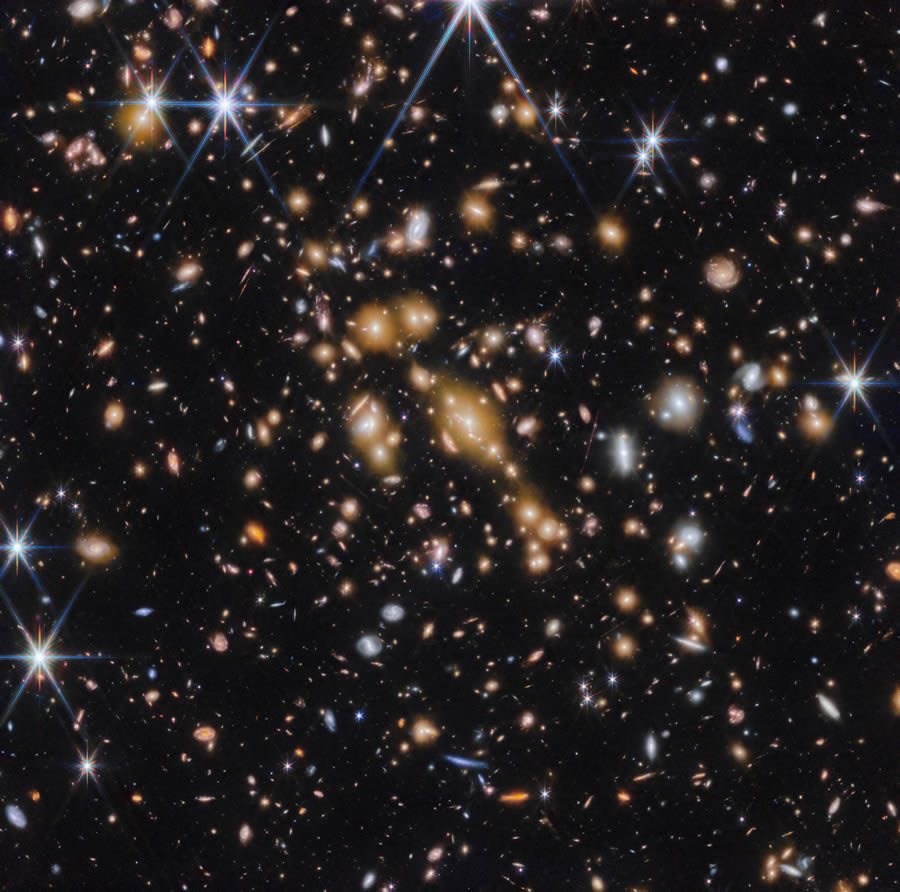
Image Source: NASA’s James Webb Space Telescope
An international team of astronomers have used the NASA/ESA/CSA James Webb Space Telescope to discover gravitationally bound star clusters when the Universe was 460 million years old. This is the first discovery of star clusters in an infant galaxy less than 500 million years after the Big bang.
#9. First-of-Its-Kind Detection Made in Striking New Webb Image
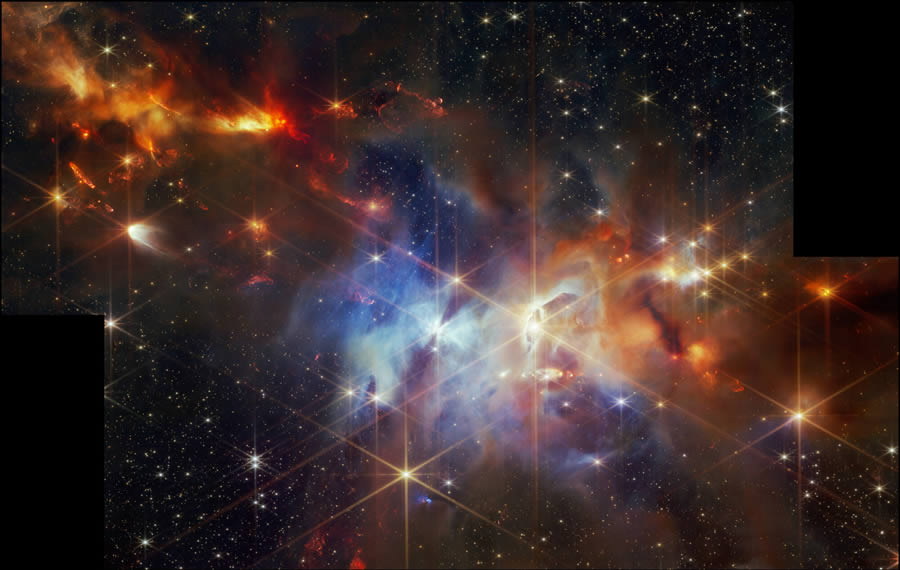
Image Source: NASA’s James Webb Space Telescope
Webb has captured a stellar phenomenon for the first time. See how those bright red, clumpy streaks in the top left are all slanted in the same direction to the same degree? They show aligned protostellar outflows, or jets of gas from newborn stars.
#10. Investigating the Origins of the Crab Nebula With NASA’s Webb
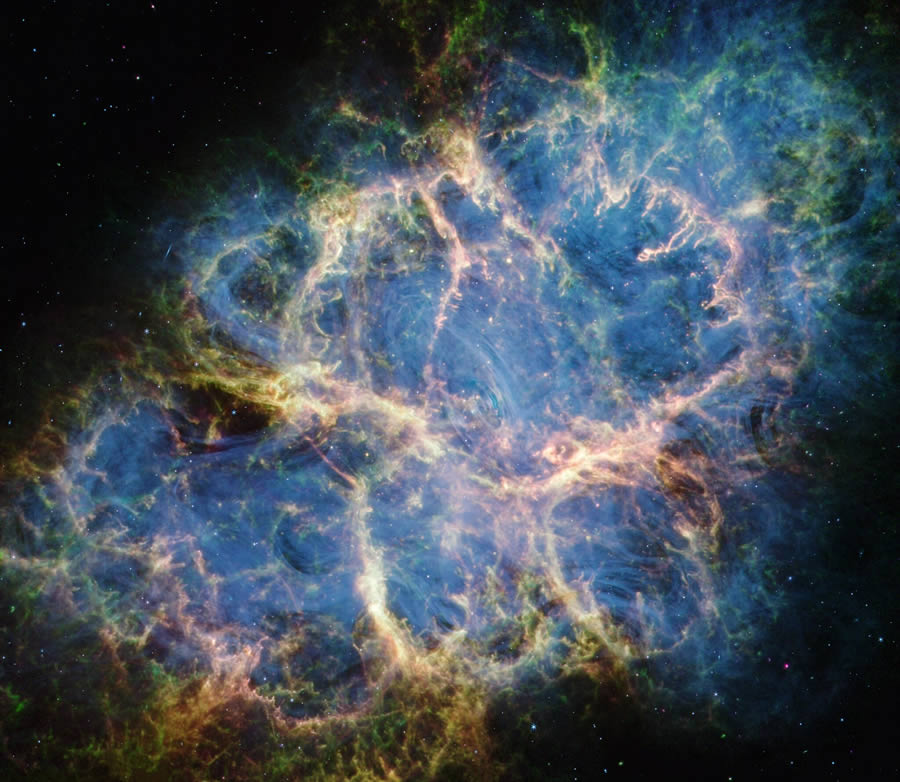
Image Source: NASA’s James Webb Space Telescope
Webb is cracking open the Crab Nebula to help scientists figure out what is inside. The Crab is the remnant of what was once a massive star, but it’s highly unusual in composition, making scientists think its star might not have been typical either. Webb also mapped light emitted from the dust in the Crab Nebula in high resolution for the first time.
#11. NGC 4449 (MIRI)
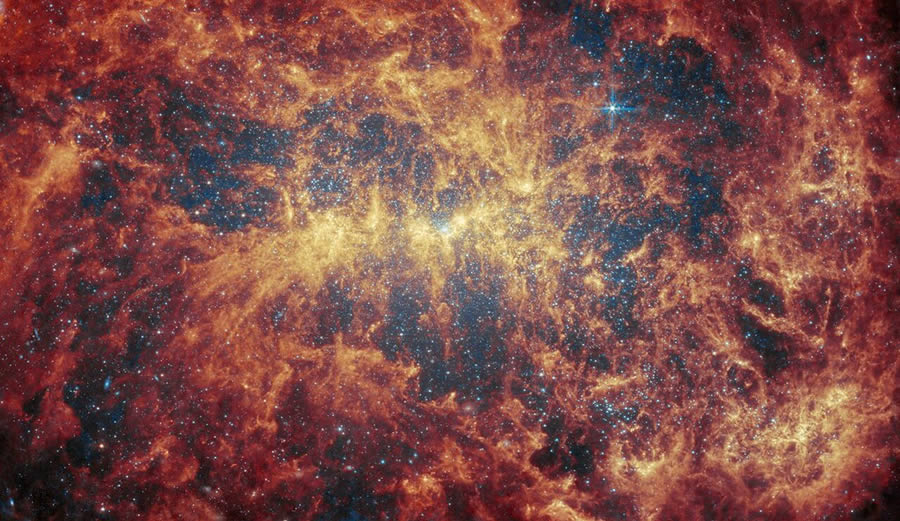
Image Source: NASA’s James Webb Space Telescope
Webb took a look at “starburst” galaxy NGC 4449, located 12.5 million light years away. Starbursts are intense periods of star formation usually concentrated at a galaxy’s core, but NGC 4449’s activity is much more widespread — likely due to past interactions with its galactic neighbors.
#12. Star-Studded Cluster (NGC 6440)
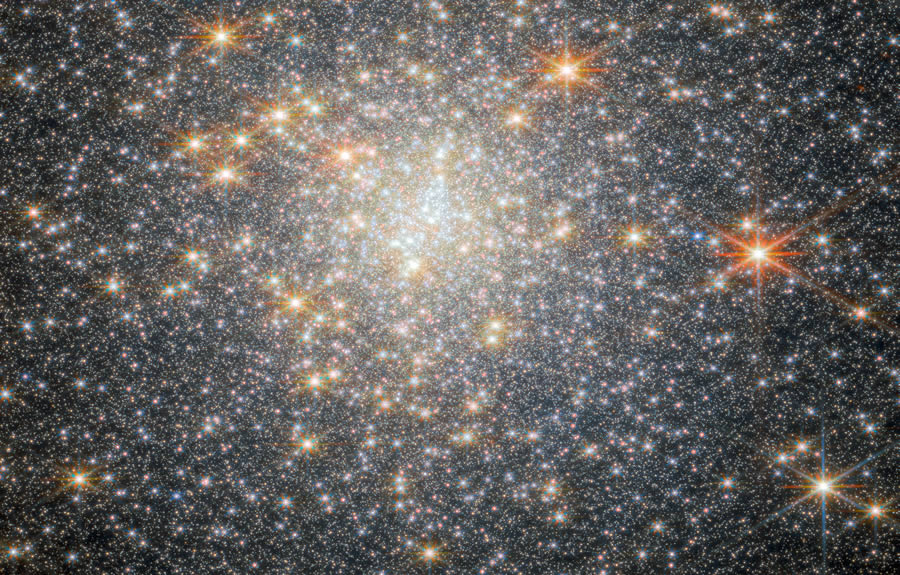
Image Source: NASA’s James Webb Space Telescope
Until Webb, it was a challenge to observe star clusters in the dense central area of our Milky Way — which bulges out, full of old stars and dust! Here’s Webb’s view of NGC 6440.
#13. M82 Webb NIRCam – Longer Wavelengths
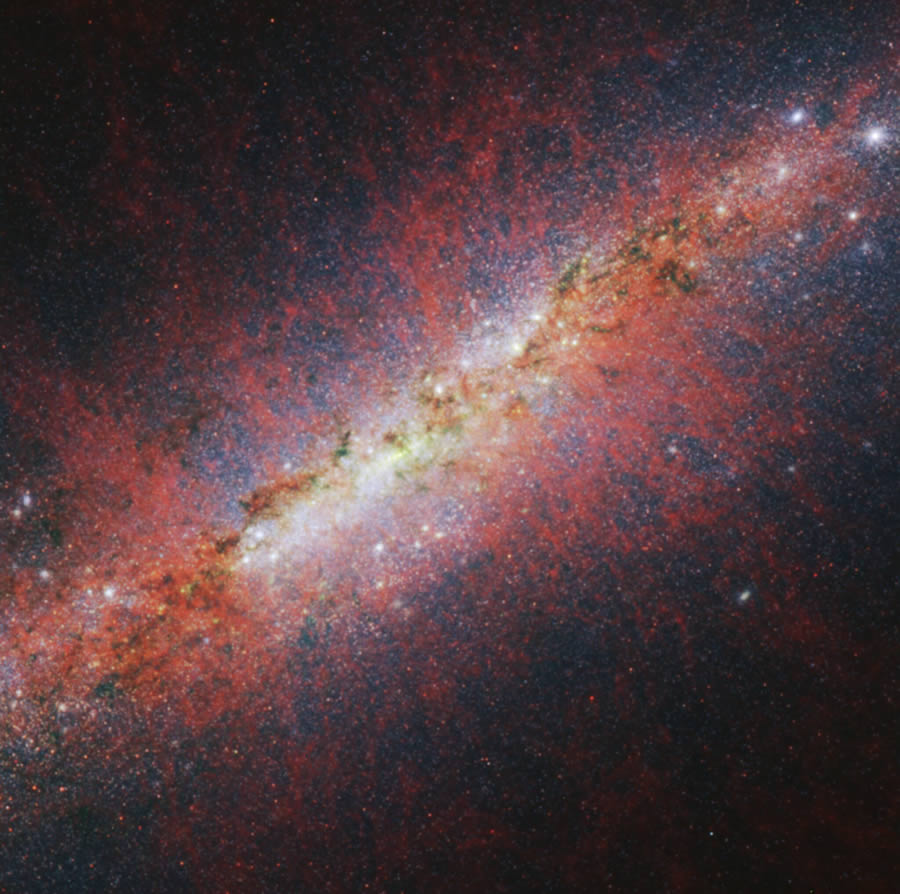
Image Source: NASA’s James Webb Space Telescope
Astronomers used the James Webb Space Telescope to look toward M82’s center, where a galactic wind is being launched as a result of rapid star formation and subsequent supernovas. Studying the galactic wind can offer insight in how the loss of gas shapes the future growth of the galaxy.
#14. Peering Into the Tendrils of NGC 604 with NASA’s Webb
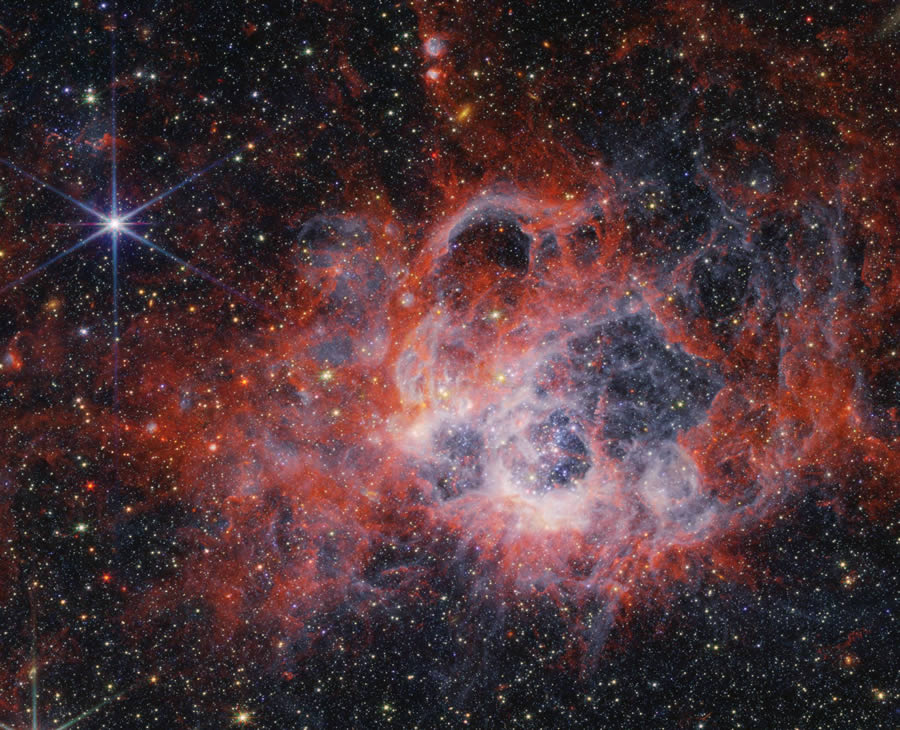
Image Source: NASA’s James Webb Space Telescope
Star-forming region NGC 604 contains more than 200 of the hottest, most massive kinds of stars (B-type and O-type stars), all in the early stages of their lives. There is no region quite like this within our own Milky Way, making NGC 604 a perfect window for astronomers to study young, massive stars.
#15. The Crab Nebula (Webb/Chandra composite)
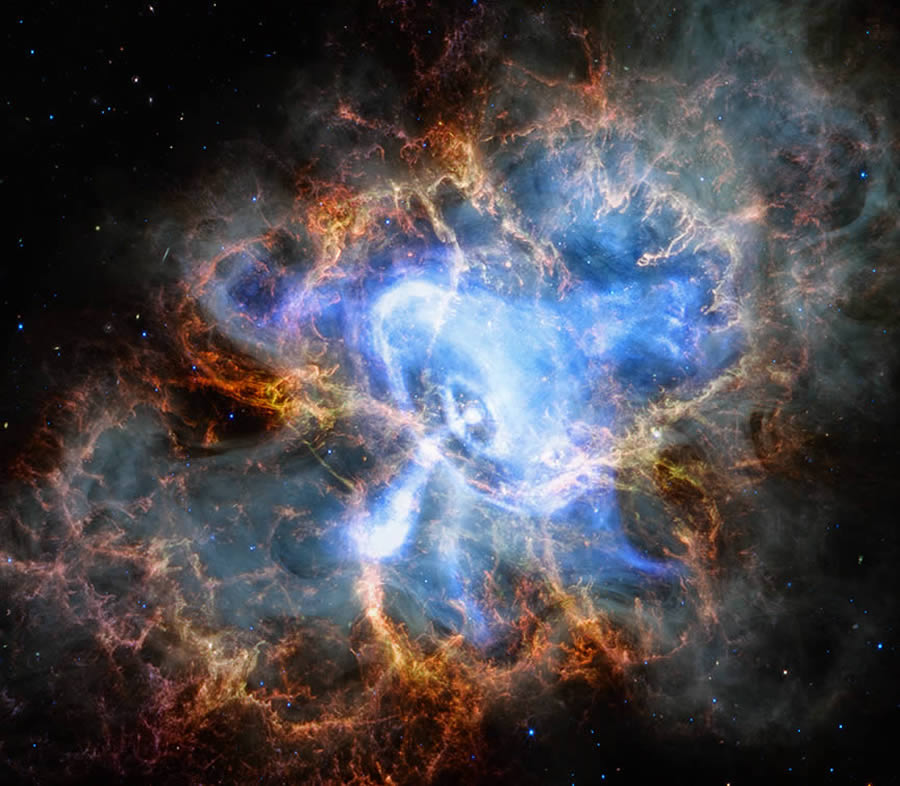
Image Source: NASA’s James Webb Space Telescope
The Crab Nebula, the result of a bright supernova explosion seen by Chinese and other astronomers in the year 1054, is 6,500 light-years from Earth. At its center is a neutron star, a super-dense star produced by the supernova. As it rotates at about 30 times per second, its beam of radiation passes over the Earth every orbit, like a cosmic lighthouse.

